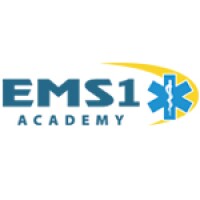This article originally posted at Limmer Education and is reprinted with permission.
The EMS1 Academy features “Capnography for BLS: Getting Started with Capnography,” a one-hour accredited course designed to introduce the benefits of capnography, present a basic understanding of the capnogram, and how to use it to explore the physiology of the respiratory cycle. Visit the EMS1 Academy to learn more and schedule a demo.
By Chris Ebright
EMS responds to a residence for a seven-year-old male with a cough and trouble breathing. This episode began two hours ago and has been accompanied by a runny nose without any other symptoms. His mother has been treating him with albuterol by a nebulizer, but he has progressively become more short of breath. Past medical history is notable for asthma since infancy, with multiple prior hospitalizations.
Physically, the patient appears to be in moderate respiratory distress, with suprasternal and intercostal retractions. His vital signs include a respiratory rate of 40/minute, heart rate of 120/minute, and pulse oximetry of 93% on room air. Lung exam is notable for diffuse inspiratory and expiratory bilateral wheezing, poor air movement and a prolonged expiratory phase. The remainder of the examination is unremarkable.
Case discussion – Asthma pathophysiology
Asthma is the most common chronic childhood disease and a common reason for pediatric emergency medical treatment. It affects approximately 10-15% of all children in the United States. [1] Risk factors include obesity, premature birth and chronic environmental exposure to pollutants. Some children are genetically predisposed, as asthma tends to be passed down through generations. An acute asthma attack is commonly precipitated by factors such as:
- Allergen exposure
- Stress
- Exercise
- Food additives
- Recent upper respiratory infections
- Exposure to cold air
- Tobacco smoke
EMS professionals need to keep in mind that a child’s lower airway anatomy is proportionally smaller than an adult’s, and is easily compromised from a lesser degree of swelling and constriction. In response to one of the events mentioned earlier, a series of reactions occur in the lower airway.
- First, the smooth muscle surrounding the bronchioles is stimulated by histamine and leukotriene, causing bronchoconstriction.
- Secondly, mucous glands and cells that line the lower airway are stimulated to secrete excessive mucous, which plugs the bronchioles.
- Finally, fluid shifts into the walls of the lower airway, resulting in inflammation and a decrease in airway diameter. The net result is a narrowing of the small airways with increased resistance to airflow.
These pathophysiologic changes cause distal alveoli to trap air and become hyperinflated. As the amount of hyperinflated lung tissue expands, the child’s diaphragm is progressively flattened, causing a mechanical disruption of ventilation. Increased workload for ventilation is transferred onto smaller and weaker intercostal and suprasternal muscles, leading to rapid fatigue and onset of respiratory failure.
The hyperinflated tissue also puts excessive pressure on pulmonary capillaries and collapses adjacent alveoli. The acute pulmonary hypertension causes premature right ventricular failure, poor perfusion to any remaining functional alveoli and eventual hypoxemia. Hypoxemia also develops from collapsed alveoli that are still being perfused but are unable to participate in gas exchange. Blood flows through capillaries adjacent to the collapsed alveoli and returns to the left side of the heart, still deoxygenated.
The increased ventilation rate in the distressed child accelerates volume loss, decreasing perfusion to multiple organ systems. This, combined with the resultant hypoxia, leads to cellular anaerobic metabolism and systemic accumulation of lactic acid and ketones. Once respiratory failure occurs, these by-products combine with increased levels of carbon dioxide to profoundly decrease serum pH.
Pediatric asthma patient presentation
During an acute attack, varying degrees of dyspnea, tachypnea, tachycardia, accessory muscle use, retractions, coughing, JVD, audible wheezing, skin color and mental status changes manifest. Bronchiolitis may mimic asthma in children younger than two years of age, and wheezing can be a sign of foreign body ingestion in toddlers [2].
Providers should observe the patient’s work of breathing as well as auscultate for abnormal lung sounds. The lack of abnormal lung sounds may be an ominous sign of poor air movement in a patient at risk for respiratory failure. Pertinent items from the patient’s history include:
- Prior diagnosis of asthma
- Onset
- Triggers for the exacerbation
- Current asthma medications
- Prior ED visits or hospitalizations for asthma (including intensive care unit admissions and/or intubations)
As a baseline, an acute asthma attack presents with some degree of respiratory distress. The presence of wheezing often characterizes the severity of the attack, and thus, the degree of bronchoconstriction.
In a mild asthma attack, wheezing is typically audible at the end of expiration, indicating increased resistance to expiratory airflow. Oxygen saturation levels may be normal or slightly low.
During a more severe asthma attack, wheezing may be audible during inspiration and expiration or may disappear entirely. Oxygen saturation levels typically reflect hypoxemia, with readings that usually range from less than 90-94%. Characteristically, as lower airway obstruction worsens, capnography waveforms develop a raised shark-fin shape. This shape progressively flattens toward the baseline if airway patency is not restored.
Status asthmaticus is a life-threatening condition of progressively-worsening bronchospasm and respiratory dysfunction due to asthma that is unresponsive to conventional therapy. It typically progresses into respiratory failure or arrest and requires aggressive ventilatory and pharmacological interventions.
The child with status asthmaticus presents with air hunger. Because of the profound bronchoconstriction and minimal airflow through the bronchioles, wheezing is either faint or completely absent. Oxygen saturation levels often reflect severe hypoxia, with readings well below 90%. As hypoxemia worsens, the workload on the ventricles of the heart increases, and the child becomes profoundly acidotic from associated hypercarbia.
Pediatric asthma interventions and management
Once the EMS professional concludes that the most likely diagnosis is an asthma exacerbation, treatment centers around reversing bronchoconstriction and airway inflammation, correcting hypoxemia, rehydration and monitoring for complications – such as pneumothorax.
First-line treatment of an asthma patient with any degree of respiratory distress should be albuterol. It relaxes bronchial smooth muscle and enhances mucous clearance. Ideally, albuterol is administered as a nebulized solution (2.5 mg per dose for patients less than 10 kg, and 5 mg per dose for patients greater than 10 kg). Common side effects include tachycardia and tremors. Rarely, children may experience arrhythmias, such as supraventricular tachycardia.
The addition of ipratropium bromide (0.5 mg per dose) to albuterol has been shown to influence a child’s outcome positively. The combination of ipratropium bromide and albuterol may be repeated, as needed, for persistent respiratory distress [3-7].
For critically ill children, several other adjunctive therapies may be considered. Early administration of corticosteroids in addition to inhaled beta 2 agonists is recommended, typically at a dose of 2 mg/kg. Intravenous epinephrine rapidly relaxes bronchial smooth muscles and is dosed at 1.0 mL of 1:10,000 concentration, administered over one minute.
Intravenous magnesium has been noted to produce good bronchodilation effects with pediatric patients in status asthmaticus. It is dosed at 50 mg/kg. Common side effects include skin flushing and hypotension, which is rarely clinically significant and responds well to fluid administration.
Mechanical ventilation may be necessary in rare cases. Non-invasive ventilation with bi-level positive airway pressure can help stave off intubation and preserves the conscious patient’s respiratory drive. Intubation and mechanical ventilation are the last resort for patients with refractory respiratory failure and/or respiratory arrest.
It is difficult to match an asthma patient’s hyperventilation, and lower tidal volumes should be used to avoid barotrauma in the setting of hyperinflation. Finally, intravenous ketamine at doses starting at 2 mg/kg, is gaining favor as an adjunctive bronchodilator, especially for agitated patients in respiratory distress [8].
References
1. Shah MN, Cushman JT, Davis CO, Bazarian JJ, Auinger P, Friedman B. The epidemiology of emergency medical services use by children: an analysis of the National Hospital Ambulatory Medical Care Survey. Prehosp Emerg Care. 2008 Jul-Sep;12(3):269-76.
2. Lerner EB, Dayan PS, Brown K, Fuchs S, Leonard J, Borgialli D, Babcock L, Hoyle JD, Kwok M, Lillis K, Nigrovic LE, Mahajan P, Rogers A, Schwartz H, Soprano J, Tsarouhas N, Turnipseed S, Funai T, Foltin G., Pediatric Emergency Care Applied Research Network (PECARN). Characteristics of the pediatric patients treated by the Pediatric Emergency Care Applied Research Network’s affiliated EMS agencies. Prehosp Emerg Care. 2014 Jan-Mar;18(1):52-9.
3. Adcock IM, Maneechotesuwan K, Usmani O. Molecular interactions between glucocorticoids and long-acting beta2-agonists. J. Allergy Clin. Immunol. 2002 Dec;110(6 Suppl):S261-8.
4. Stead L, Whiteside T. Evaluation of a new EMS asthma protocol in New York City: a preliminary report. Prehosp Emerg Care. 1999 Oct-Dec;3(4):338-42.
5. Knapp B, Wood C. The prehospital administration of intravenous methylprednisolone lowers hospital admission rates for moderate to severe asthma. Prehosp Emerg Care. 2003 Oct-Dec;7(4):423-6.
6. Nassif A, Ostermayer DG, Hoang KB, Claiborne MK, Camp EA, Shah MI. Implementation of a Prehospital Protocol Change For Asthmatic Children. Prehosp Emerg Care. 2018 Jul-Aug;22(4):457-465.
7. Dylla L, Acquisto NM, Manzo F, Cushman JT. Dexamethasone-Related Perineal Burning in the Prehospital Setting: A Case Series. Prehosp Emerg Care. 2018 Sep-Oct;22(5):655-658.
8. Gries DM, Moffitt DR, Pulos E, Carter ER. A single dose of intramuscularly administered dexamethasone acetate is as effective as oral prednisone to treat asthma exacerbations in young children. J. Pediatr. 2000 Mar;136(3):298-303.
About the Author
Chris Ebright is an education coordinator with the National EMS Academy, managing all aspects of initial paramedic education for Acadian Companies, Inc. in the Covington, Louisiana area. He has been a nationally registered paramedic for 24 years, providing primary EMS response along with land and air critical care transportation. Chris has educated hundreds of first responders, EMT’s, paramedics and nurses for 23 years with his trademark whiteboard artistry sessions. Among his former graduates is the first native paramedic from the Cayman Islands. Chris’ passion for education is currently featured as a monthly article contributor, published on the Limmer Education website.
He has been a featured presenter at numerous local, state and national EMS conferences over the past 12 years, and enjoys traveling annually throughout the United States meeting EMS professionals from all walks of life. Chris is a self-proclaimed sports, movie and rollercoaster junkie and holds a Bachelor of Education degree from the University of Toledo in Toledo, Ohio. He can be contacted via email at c.ebrightnremtp@gmail.com or through his website www.christopherebright.com.














